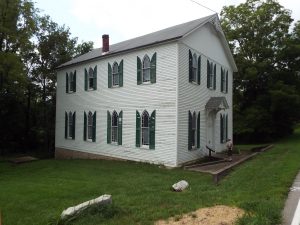Notre Dame Cathedral in Paris, France experienced a devastating fire on April 15, most likely as the result of a construction accident.
Earlier in March, three historic African American churches in St Landry Parish, Louisiana also experienced demoralizing fires, but these were the result of suspected hate crimes.
All of these fires have aroused the support of the world-wide community. Donations for the rebuilding of Notre Dame Cathedral in five years have reached over a billion dollars.
This fire and the resulting donations spurred another outpouring of money for the African-American churches in Louisiana by increasing the GOFUNDME contributions from $50,000 to $1.8 million.
What has led to such world-wide generosity? Would it not be more prudent to raise money to improve communities in need rather than old damaged buildings from the past? By preserving them, what do they contribute?
Perhaps in the act of preserving and rebuilding, the community, local or world-wide, decides to save something bigger than itself, a reverence for history.
Paris, France and St. Landry Parish, Louisiana are a long way from Northern Kentucky. However, locally this same fervor has been both visible and missing.
For instance, the Rabbit Hash General Store experienced its own devastating fire a few years ago. That event drew the interest and support from locals, corporations, and even the world. As a result, this iconic Boone County structure was successfully and authentically rebuilt in 2017, thus remaining a window to the past.
Unfortunately, this is not the norm.
Many historic structures weather the rages of time and then collapse or are bull-dozed for development. Recently, the question of how to preserve the Big Bone Methodist Church has become a point of discussion.
Located on park property (Big Bone Lick State Historic Site), it was always believed that Kentucky Parks would be able to take care of it. In 2005, the church received a serious face-lift.
The construction of a berm that would divert water from the highway was installed, the shutters were repaired and some replaced, the entire building was repainted, and the interior received a serious cleaning, all through the efforts of park workers, local volunteers and members of Friends of Big Bone.
At that time there were three remaining buildings of the little town of Big Bone: the church itself, Big Bone Gardens across the street, and the old Victorian farmhouse on the Piner property down the road. The town, however was much bigger in the 1920s-1950s, it strung along Beaver Road from the church almost to Boat Dock Road.
As a farming community, it represented a simpler time when people came to town to go to church on Sunday, shop at the local store, pick up mail, get a haircut, and gather to watch a local baseball game.
Yet history went further back than that of the town.

Preservation of historic landmarks should include those time has taken a toll on, such as Big Bone Methodist Church in Boone County (archive photo).
Prehistoric times, specifically the Pleistocene Era, saw mammoths, mastodons, sloths, and giant bison roam the area in search of the marshy licks (which covered much of BBLSHS) that provided the necessary salt needed by all mammals. Once the animals made their presence known, Paleo Indians were attracted to the site in order to hunt these beasts. Once an animal was brought down, the butchering process began.
Leaving the bones behind, the hunters took the meat to feed their people.
Thousands of years passed before these bones were discovered. Native Americans knew of these remnants, but in 1739 Baron Charles de Longueuil and his expedition from Canada also made their own discovery. Gathering an assortment of fossil skeletal remains from the lick, he sent some them to France where they were placed in the king’s botanical garden, the Jardin du Roi, and now reside in the Natural History Museum of Paris.
Longueuil’s discovery created quite a stir in the scientific community at that time.
Eventually, President Thomas Jefferson took interest in these bones and later sent William Clark (after his return from the Corps of Discovery), in September 1807, to find specimens. Some of these bones still remain at Jefferson’s home, and can be viewed when entering Monticello today.
Approximately a century later, the salt licks, where the bones had been discovered, were viewed as having medicinal purposes. Hotel spas began to attract visitors who made the journey in order to recuperate by bathing in these waters and in some cases drinking it.
History and prehistory have always been key features of Big Bone Lick, the cradle of American vertebrate paleontology.
Even the townspeople of Big Bone knew that artifacts could still be found. Old-timers recall an area behind Big Bone Methodist Church they called “jelly ground” where the marshy land still could reveal bones.
When Big Bone Lick State Park was established in the early 1960s, the salt spring that caused the “jelly ground” was capped. Though the area behind the church remains dry, salt licks located in other parts of the park still appear, and bones within Big Bone Creek still can be discovered.
The creation of BBLSHS provided the preservation and protection of the history and prehistory residing within its boundaries. Unfortunately historic buildings were not so fortunate.
The Victorian farmhouse, located on the Piner property now part of park property, met its demise a few years ago when nothing could be done to save it. Now the church is one of two remaining buildings of the town of Big Bone.
When it fades, so does its history.
Many Boone County residents as well as members of Friends of Big Bone and the Boone County Historic Preservation Review Board have expressed concern, but the Kentucky Parks’ lean budget has prevented it from taking care of historic structures.
Watching the demise of any historic structure is painful, especially when they reflect the history of a local or world-wide community.
In the case of the fires at Notre Dame Cathedral, the three Louisiana churches, and the Rabbit Hash General Store, damage and destruction occurred, but these fires also attracted media attention. Thus, communities and individuals felt compelled to save them through the arduous task of raising money in order to rebuild.
Like these historic constructions, Big Bone Methodist Church is also rich in history, especially prehistory. It too deserves the care and support of the public; unfortunately the slow wasting away of a building does not attract the same attention as a fire.
Preservation requires a commitment to history. Hopefully this structure, too, will be revered and saved.
Patricia Fox is the president of Friends of Big Bone

















